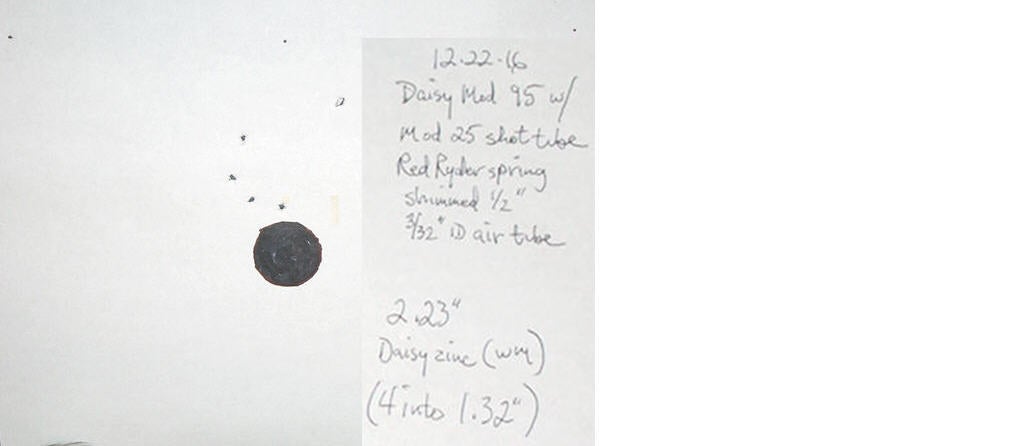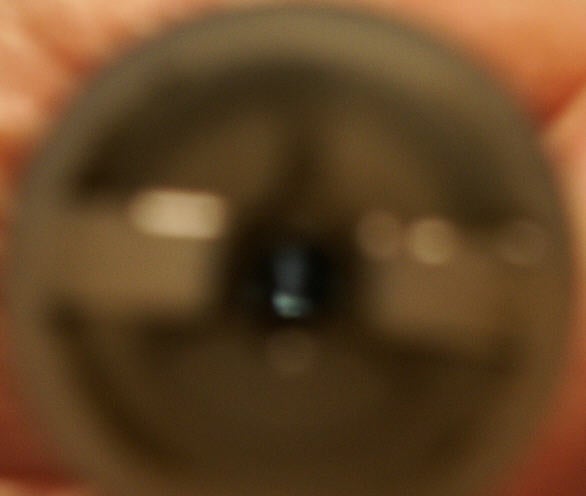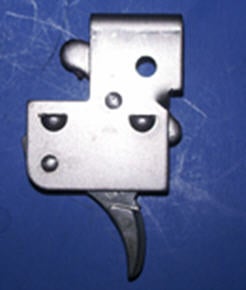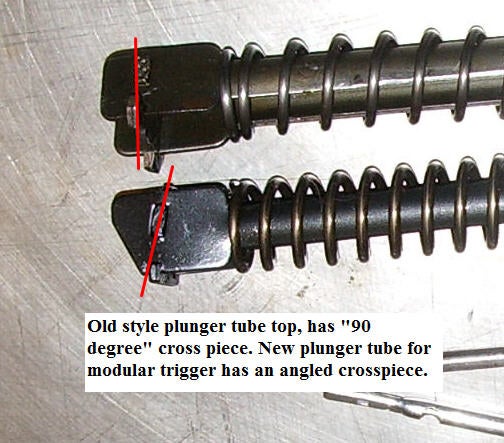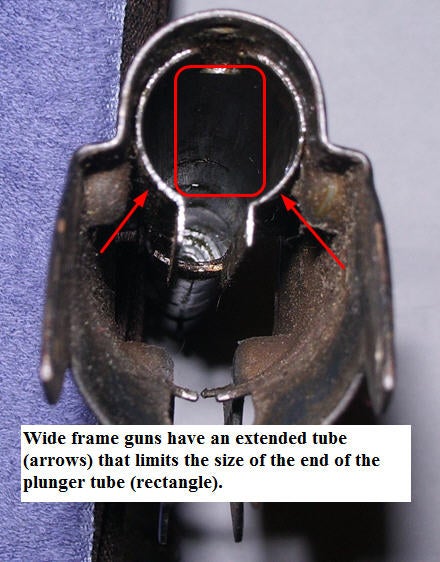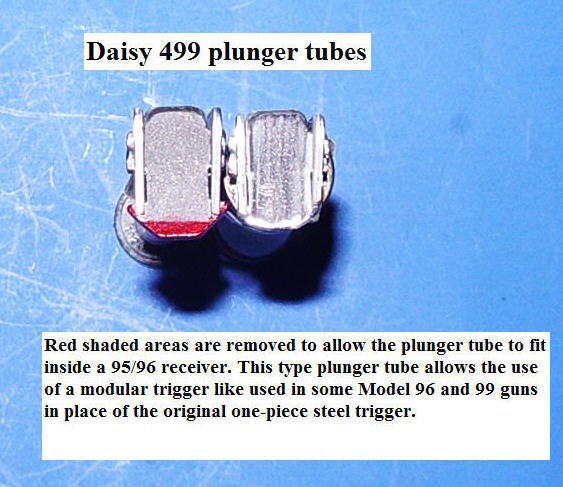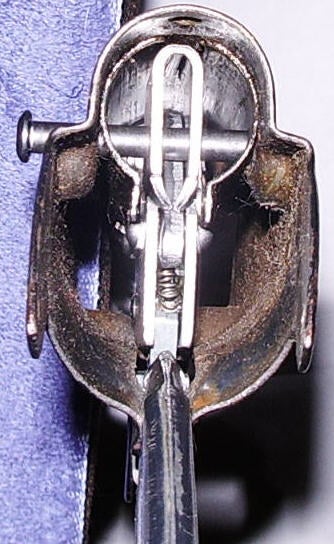I tried the Daisy Match Grade Avanti BBs, the MV increased by ~10 fps, average was 324 fps, ES was 3 fps.
I was able to tweak the rear sight to get the windage correct. I'm glad I didn't need to resort to anything more involved. It looks like the gun had been dropped or the rear sight snagged on something.
The lever was too loose, I found it to be worn where the receiver pinches it, so I substituted the original Model 95 lever for the straight metal lever from the Model 104. It wasn't being used because the 104 has a Red Ryder buttstock and curved metal lever.
Anyone got any ideas in the following?
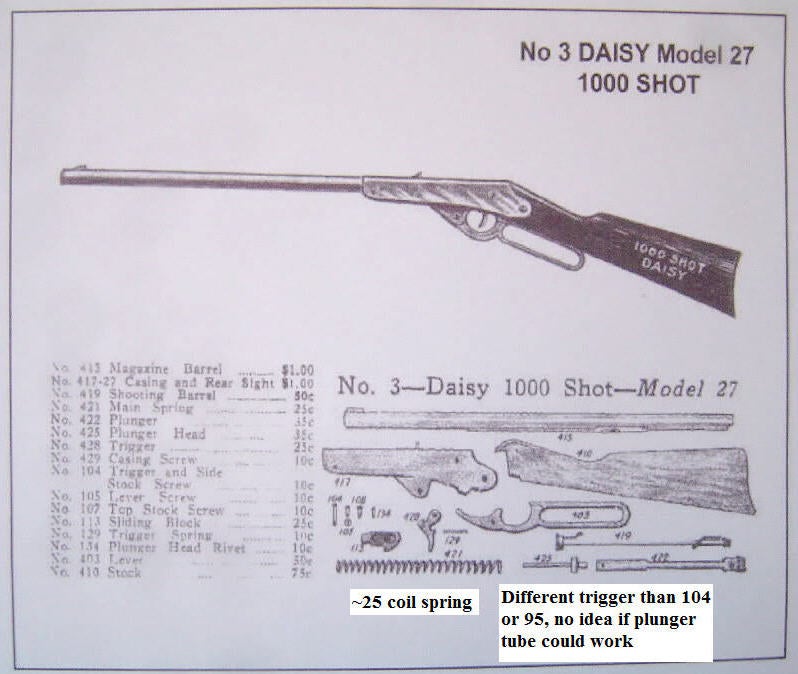
I was able to tweak the rear sight to get the windage correct. I'm glad I didn't need to resort to anything more involved. It looks like the gun had been dropped or the rear sight snagged on something.
The lever was too loose, I found it to be worn where the receiver pinches it, so I substituted the original Model 95 lever for the straight metal lever from the Model 104. It wasn't being used because the 104 has a Red Ryder buttstock and curved metal lever.
Anyone got any ideas in the following?
- When did daisy start using phillips head screws?
- When did scope holes start/stop?
- When did rubber seals start, leather end?
- When did lever pivot change?
- When did shot change from lead to steel?
- What model(s) had strongest spring/highest velocity?
- 0.095” wire diameter
- 0.720” spring OD
- 7-7/8” free length
- 25 coils
- A description or diagram showing how the cock-on-closing mechanism worked.
- What other models cocked when closing the lever?

Last edited:



